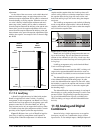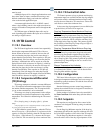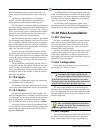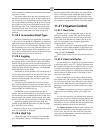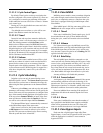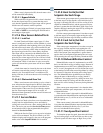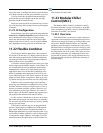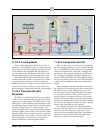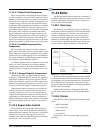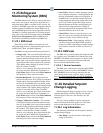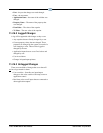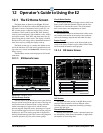
11-54 • E2 RX/BX/CX I&O Manual 026-1614 Rev 4 5-JAN-2013
stages have been set to High, then the fan speed should be
set to High; otherwise, the fan speed should be set to Low.
If for any reason the algorithm thinks that the high
speed and the low speed should both be ON, the high-
speed fan should be turned ON only.
Proper fan speed should be set when there are no heat-
ing or cooling stages ON, and the Fan Always On Setpoint
is enabled.
11.21.12 Configuration
Set the Strategy type under application Setup under the
General tab to Separate Setpoints. Enter the desired val
-
ues for heating and cooling stages. Cooling, heating,
alarm, and miscellaneous setpoints can be edited under
additional tabs. Press Control + zero (0) while the More
tab is highlighted to bring up the list of additional tabs.
11.22 Flexible Combiner
The Flexible Combiner application, a new feature of
E2 versions 2.20 and above, is a highly advanced and ver
-
satile I/O control program used to combine multiple ana-
log and digital input values using programmed equations
similar to those used in spreadsheets.
A Flexible Combiner application may have up to eight
analog outputs and four digital outputs, each of whose val
-
ues are determined by user-programmed equations that
mathematically combine up to eight analog inputs and
eight digital inputs. Four of the analog outputs have the
ability to remember their output state over an E2 power
cycle. Additionally, up to four alarms can be set up whose
trigger and alarm delays are equations. Alarm type, prior
-
ity, and the message for each alarm are user-configurable.
Equations used to calculate output values and time
delays may use mathematical combinations of any of the
Flexible Combiner's analog and digital inputs, as well as
numeric and named constants, operators, functions, and
even rudimentary if-then logic functions. For control of
digital outputs, the Flexible Combiner also supports sepa
-
rate equations that determine ON and OFF delays.
For E2 versions 2.40 and above, the user can set up to
four alarms whose trigger and alarm delays are equations.
The user may also choose the alarm type, priority, and the
message for each alarm.
The Flexible Combiner may also be programmed to
operate a digital output as a PWM (pulse width modula
-
tion) output. In this instance, the equation written for a
PWM output determines its period and pulse width. A typ
-
ical Flexible Combiner application consists of three types
of components: inputs, equations, and outputs. For more
information about this application, see the Flexible Com
-
biner manual (P/N 026-1620).
11.23 Modular Chiller
Control (MCC)
The Modular Chiller Control is available for the E2
RX model controllers version 2.82 and above. In the RX-
300, a maximum of one MCC is allowed. In the RX-400, a
maximum of two MCCs are allowed.
11.23.1 Overview
A Modular Chiller is made up of a single compressor
connected to a brazed plate heat exchanger that provides a
chilled water and glycol mixture for cooling display cases
and coolers. Multiple Modular Chillers are connected
together to meet the capacity requirements of the system.
Modular Chillers are designed to provide cooling by paral-
leling the hydronics side of the secondary system instead of
the refrigeration side of the system. These units also use a
water and glycol mixture as a condensing fluid for com
-
pressor heat of rejection. This design eliminates the long
refrigerant piping runs thereby significantly reducing re
-
frigerant charge.





